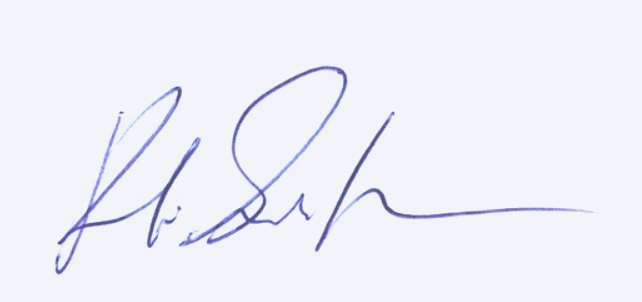
Message from the President
There are moments when history shifts not only because of what humanity creates but because of how humanity learns to see. Digital Earth marks such a shift. More than a tool or a platform, it offers a planetary lens that allows us to perceive, understand, and act together in a world of deep interconnection.
I step into the role of President of the International Society for Digital Earth with deep gratitude for those who built the path before me. Since 1998, scientists, technologists, policymakers, and creative thinkers have carried this vision forward with dedication and imagination. They recognised both its urgency and its promise, helping humanity navigate an era of profound change and working to strengthen the resilience of our planet in the Anthropocene.
Digital Earth transcends borders and ideologies. Built through collaboration among nations, disciplines, and cultures, it is guided by science, by ethics, and by shared responsibility. Just as the Human Genome Project once revealed the code of life, Digital Earth uncovers the hidden patterns and delicate balances of planetary systems. Where the genome mapped biology, Digital Earth maps something broader: the living fabric of the biosphere, the reach of the technosphere, and the shared imagination of the noosphere. Life, technology, and meaning interwoven in a single planetary story.
As one of ISDE’s founding members, over the past two decades, I have witnessed the vision of Digital Earth reach across every continent and culture. From Europe to the Pacific, from Asia to Africa, from the Americas to island nations whose very survival depends on global cooperation, our congresses have brought together hearts and minds from around the world. Each gathering affirms that Digital Earth belongs to no single nation or ideology. It is a space where leading thinkers, scientists, and policymakers can share knowledge and imagination in pursuit of a better future for all.
Our publications have carried this spirit even further. The International Journal of Digital Earth and Big Earth Data, published for ISDE by Taylor & Francis, continue to advance international scholarship and provide the academic foundations for this emerging mega-science. The Manual of Digital Earth, published by Springer Nature and downloaded more than 1.2 million times, has become a trusted guide for students, governments, and researchers worldwide. What began as a spark has grown into a movement that is global in scope yet grounded in local impact. It is now taking root in Africa, the Pacific Islands, and in many other regions whose leadership will help define the planet’s resilience in the decades ahead.
At the heart of Digital Earth is a set of twelve thematic frameworks that help us navigate its complexity. They are not rigid commandments but evolving guides that allow disciplines and perspectives to connect. Each framework offers a distinct lens, and together they form the connective tissue that links ideas, aligns action, and turns scattered efforts into a shared global conversation.
They can be thought of as ways of asking “Digital Earth as a…”. Some explore the foundations: Digital Earth as a dynamic adaptive system, as a cyber-physical continuum, and as a sustainable computational substrate. Others create enabling infrastructures: Digital Earth as ethical governance, as federated knowledge across sciences and cultures, and as value systems that recognise both natural and human capital. Still others connect directly to people: Digital Earth as a learning platform, as cultural memory, and as a decision theatre where futures can be rehearsed before they unfold.
Digital Earth must be recognised not as a project with an end point, but as essential public infrastructure. It requires long-term commitment to co-creation, scaling, and stewardship across generations. As a defining global endeavour of the twenty-first century, it provides the means by which humanity can align knowledge, governance, and innovation to safeguard the planet’s future.
The stakes could not be higher. Advancing sustainability, security, and prosperity is not optional. These are the conditions for history to continue. We may not see a twenty-second century unless we realise Digital Earth in the twenty-first.
What began as a bold vision has matured into a living framework for planetary coordination. It is powered by extreme computing, spanning exascale, quantum, and neuromorphic design, enriched by data cubes that organise vast streams of information, and continuously informed by high-altitude platforms, IoT and orbital sensors. Generative and agentic AI turn torrents of multispectral data into insight, while immersive extended reality and spatial digital twins allow us to step inside Earth’s most complex systems. Digital Earth is not a static archive but an adaptive and participatory fabric, where foresight, design, and governance converge. It is the place where science meets art, governance meets storytelling, and intelligence meets empathy. Here we learn to think as a species, to act as stewards, and to organise around shared truths.
Digital Earth provides scaffolding for continuity. It enables us to navigate complexity, anticipate risk, and amplify cooperation. It grounds our choices in equity and care. Few initiatives carry such weight, for this may be the one that ensures history itself continues.
The challenge now lies in how we shape the institutions around Digital Earth. It cannot be approached as a finished product but must grow as generative public infrastructure, open to all and sustained by many. Its governance must be polycentric, drawing strength from multiple centres of knowledge and leadership across regions and cultures. Its progress must be use-case driven, responding to real needs in sustainability, security, and human well-being. To endure, it must be built on open standards, rooted in cultural legitimacy, and carried forward with long-term responsibility.
The International Society for Digital Earth calls upon all who see both the urgency and the promise of this vision to join in its stewardship. The age of Digital Earth has begun. Let us build it together so that it endures as a legacy of care, imagination, and responsibility for generations to come.
With commitment to our collective future,

Richard Simpson
President, International Society for Digital Earth (ISDE)

2006-2023 All Rights Reserved 京ICP备06045536号-1 京公网安备 11010802041631号